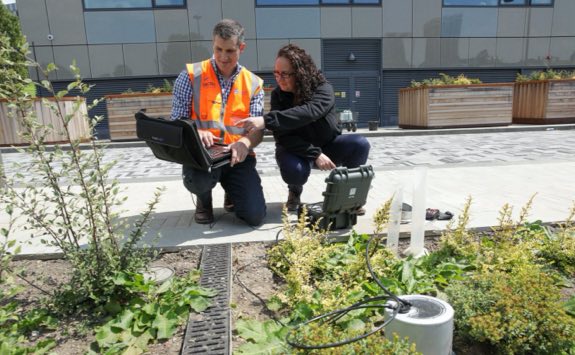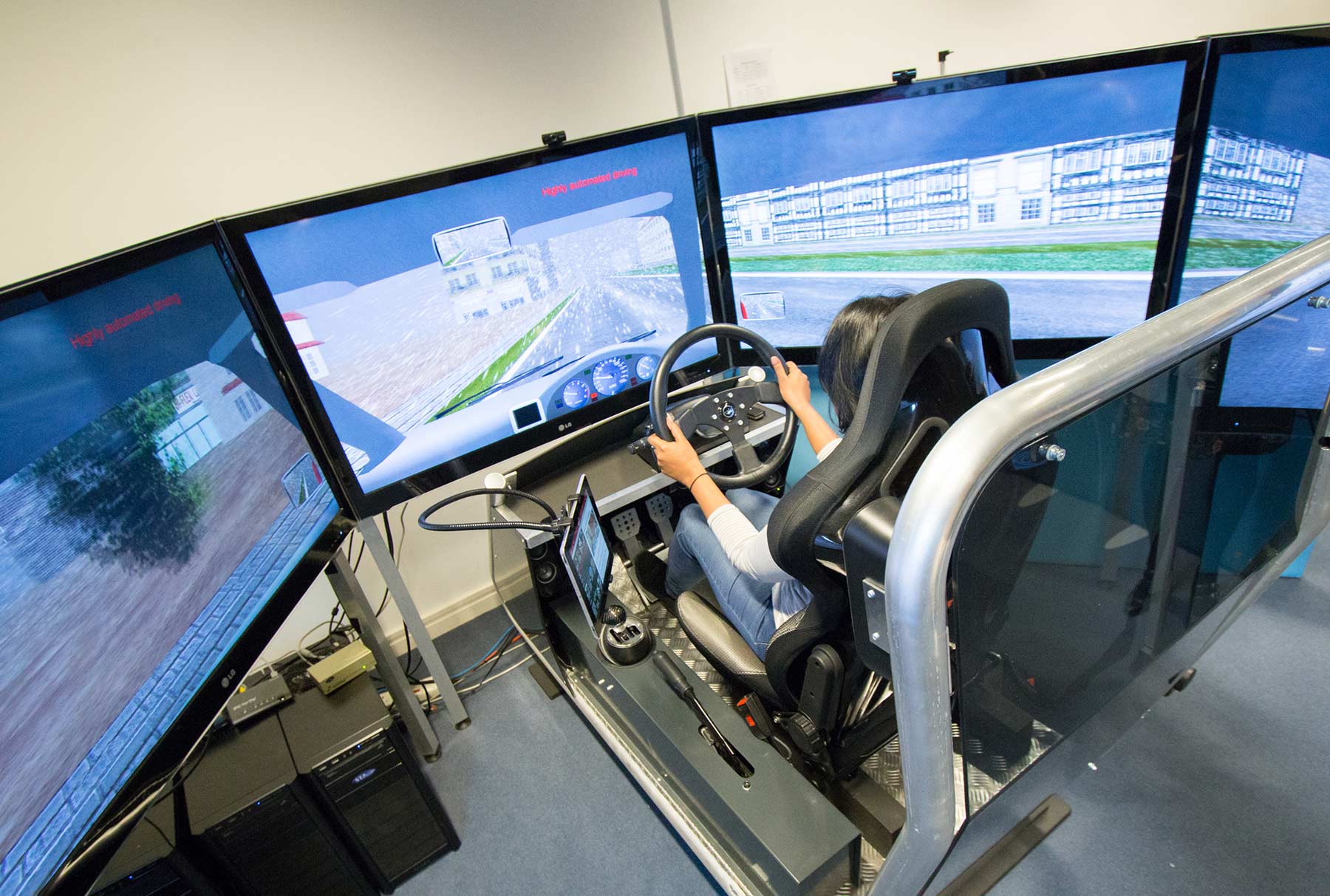Chemical Engineering: Facilities
The School of Engineering has a wide range of Chemical Engineering facilities for teaching and research.
Teaching facilities
- The Millennium Laboratory– open space laboratory with capacity for 65 students per class. The lab comprises a wide range of facilities and experimental rigs which help to teach stage 1 students and final year research projects. Among others, these include:
- Wet chemistry experimentation, including kinetic analysis, thermodynamics of chemical reactions and vapour-liquid equilibriums, adsorption, liquid-liquid extraction, ionic studies, and analytical chemistry;
- Foundations of chemical engineering rigs for fluid mechanics, mass and heat transfer;
- Analytical facilities for UV-Vis and FT-IT spectroscopies, Gas chromatography, Thermal Gravimetric Analysis, and Bomb Calorimetry.
- Merz Court Pilot Plant Laboratory– this space has capacity for 65 students per class, used for teaching in stage 2 and 3 Chemical Engineering Laboratory classes. The pilot plant has 28 experimental rigs to show industrial process equipment operation principles. The Automated Control Laboratory supplements this space. Experiments cover multiple areas such as:
- Thermodynamics;
- Advanced topics in fluid mechanics, mass and heat transfer, including phase change processes and heat exchangers;
- Separation Processes;
- Reaction Engineering;
- Renewable and Environmental Engineering, including fuel cells, electrochemical sensors and processes, and light-driven reactions;
- Process Intensification.
- Automated Control Laboratory – this space operates with the Pilot Plant space and aids teaching and research in multiple UG and PGT courses. The laboratory has with five automated control, featuring industrial-level instrumentation, actuators and software. It caters for a wide range of processes, including control of heat transfer, mass transfer, blending and mixing, humidification, and pH. Students also gain a real experience of a remote control room situation through operation of steam-water heat exchangers located elsewhere in the building.
- Computer Clusters and Design Suite:
- Merz Court Computer Clusters (8.08, 8.10 and 8.10a) with capacity for 187 students in total. The clusters offer access to a wide range of software including the full Aspen Tech Suite for process simulation, Matlab and AutoDesk CAD software.
- Physical Computing - cluster 8.10a has 45 Raspberry Pis for workshops, coding, and prototyping activities.
- ExxonMobil Design Suite - students are able to work on and present their design projects.
- Additional facilities: additional computer cluster space, Library, Careers Service facilities are available centrally through the university.
Research Facilities
The school has state-of-the-art shared facilities for research, which are available to all research groups, UG/PGT/PGR students during their research projects and to external partners via contracting or consultancy projects. The school shared facilities include:
- Merz Court Analytical Suite– A wide range of analytical and materials characterisation techniques are available in this suite, including:
- Gas Chromatography equipped with a Barrier Ion Discharge (BID) detector, for gas and liquid sample analysis;
- Raman Microscopy;
- Inductively Coupled Plasma (ICP) Spectroscopy;
- Dynamic Light Scattering (DLS) particle size analysis;
- Electrophoretic Light Scattering for zeta potential measurements;
- Static Light Scattering for molecular weight determinations;
- Physi- and Chemisorption facilities for surface area (BET), pore size distribution and surface analysis;
- Differential Scanning Calorimetry (DSC).
- Stu Brew - Europe's first student-run brewery, operating commercially, affording hands on skills development and research in to sustainable brewing processes;
Group research facilities
In addition to the school shared facilitates, each research group has a wide range of processes and analytical technologies available for UG/PGT/PGR research use or for external partners via contracting or consultancy projects. These are available through the following research groups.

Advanced Chemical and Materials Analysis (ACMA)
Our analytical services are available to staff and students at Newcastle University, to other academic institutions, and to industry. The ACMA facilities include:
- Electron microscopy- Scanning electron microscopy (SEM) enables imaging of a surface using an electron beam. Based in the Herschel Building, our microscopy suite provides:
- Digital imaging;
- Energy-dispersive X-ray spectroscopy (EDS or EDX);
- Low vacuum (LV) mode for sensitive samples or those not appropriate for carbon or gold coating;
- Electron backscatter diffraction (EBSD).
- X-ray powder diffraction - Our XRPD laboratory is in the Bedson Building. XRPD is a robust technique used for the characterisation of crystalline materials. Through interpretation of diffraction patterns, XRPD analysis allows:
- Identification of crystalline phases;
- Measurement of crystallite/crystal domain size within discrete crystalline phases;
- Calculation of unit cell dimensions through pattern indexing;
- Phase quantification using one of several methods
- Chemical analysis - Our Chemical Analysis laboratory is also housed in the Bedson Building, and provides Raman spectroscopy. Raman spectroscopy is able to observe low-frequency modes. This technique identifies molecules by using a structural fingerprint.
Materials, concepts and reaction engineering
Brunauer–Emmett–Teller (BET) surface area analysis
This is one of many basic characterisation tools at our disposal here in Newcastle. We have routine access to surface area and porosity analyses, gas sorption analysis, X-ray diffraction, X-ray micro-CT, electron microscopy, particle size analysis, ICP-OES, MS and GC, both through in-house facilities and collaboration.
Fourier-transform infrared spectroscopy (FTIR) spectrometer
This is one of the many gas analysis tools at our disposal. They enable us to study the gases passing through membranes, or as products of catalytic reactions. This particular FTIR allows us to explore a wide range of gases with high spectral resolution and at low concentrations.
Integral reactor
The integral reactor is a laboratory-scale chemical looping reactor. It has a large number of mass flow controllers, switching valves, and a custom-made “open” furnace. We recently took the entire integral reactor to a beamline. This allowed us to perform high-resolution in-situ X-ray diffraction on a working chemical looping reactor. We reported our results in Nature Chemistry: Overcoming chemical equilibrium limitations using a thermodynamically reversible chemical reactor.
We have many membrane, chemical looping, and catalysis reactors. Thus, we are able to perform operando testing of materials in application.
Raman spectroscopy
We use in-situ Raman to probe the vibrational modes of inorganic materials. This enables us to identify materials and understand changes during chemical reactions. We study materials under gas flows from room temperature to 1500°C. We recently used the Raman microscope to study gas bubbles within molten carbonates. We reported our results in ACS Applied Materials and Interfaces: Measuring Membrane Permeation Rates through the Optical Visualization of a Single Pore.
Thermogravimetric analysis
Here we measure the mass of a sample under gas flows and temperature programs. This gives us information on, for example, the capacity of a chemical looping materials.
Process intensification
- Labs
- C12
- C18
- C113
- C123
- C125
- Intensified Reactors/Separators
- Spinning Disc Reactors
- Oscillatory Baffled Reactors (5-100 mm diameter)
- Pilot-Scale Rotating Packed Beds for CO2 Capture
- Plasma Reactor
- Heat Pipe-Extruder
- Taylor-Couette Reactor
- Micro-fluidised Beds
- Foam Flotation Columns
- Batch Photoreactor (125 W Medium Pressure Mercury Lamp)
- Gas Bubbling Column Photoreactor (125 W Medium Pressure Mercury Lamp)
- Analytical Equipment
- UV-Vis Diffusive Reflectance Spectroscopy
- UV/Vis Spectrophotometers (sample analysis or in-situ monitoring)
- FTIR Spectrometers (sample analysis or in-situ monitoring)
- HPLC
- GC and GCMS
- Calorimeter
- Coulometric Titration
- Gel Permeation Chromatography
- DO Probes
- Conductivity Probes
- Viscosity Measurement
- Turbidity Cell
- General Equipment
- Syringe Pumps
- Potentiostats
- Heating/Stirring Plates
- Rotary Evaporators
- Vacuum Oven
- Glassware Oven
- Furnaces
- Vibrating Sieve
- Heated/Cooled Recirculating Baths
- Extraction Column
- Glassware (condensers, flasks, etc)
- Specialist Resources
- Digital Microscope
- Water/Wastewater Characterization
- PIV and Stereo PIV
- High Speed Camera
- 3D Printers (FDM, DLP and SLA)
- Other resources (Analysis Suite)
- Coulter LS230 Particle Sizer
- Malvern Zetasizer (Particle size, zeta potential and polymer molecular weight)
- Nitrogen (BET) and CO2 Physisorption
- ICP (Inductively Coupled Plasma Emission Spectroscopy)
- DSC (Differential Scanning Calorimetry)
- Ball Mill
- SEM/ESEM-EDX
- XRD
- Raman Microscopy
